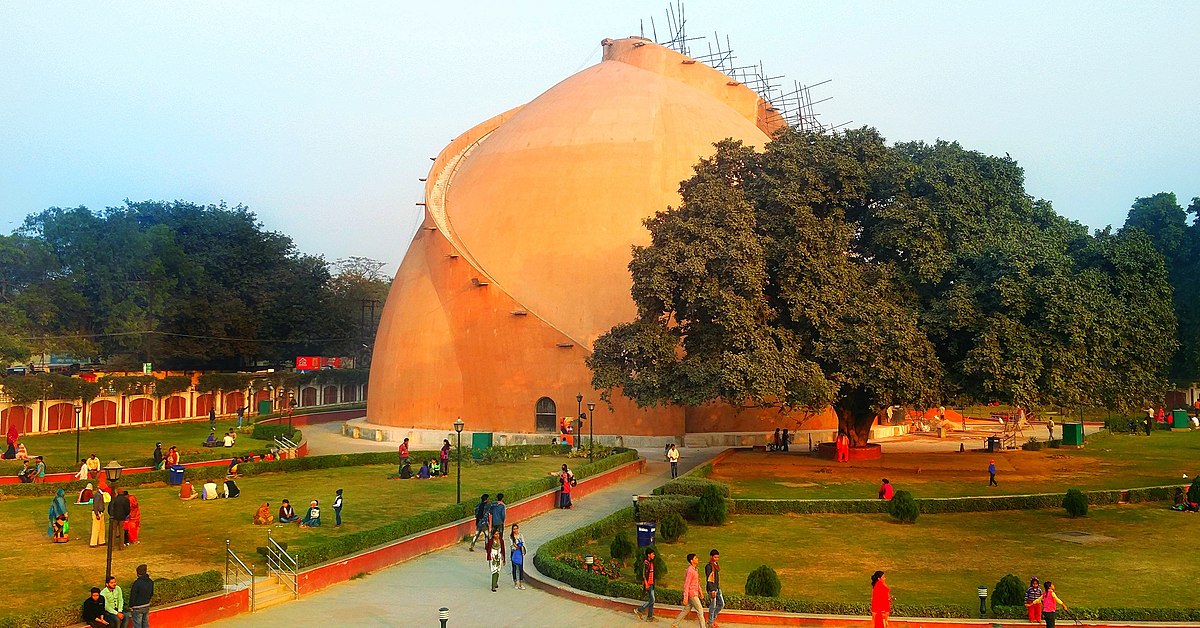Darjeeling: The Queen of the Hills in West Bengal Darjeeling, nestled in the Indian state of West Bengal, is one […]

About Golghar, Patna, Bihar
Golghar, a unique and iconic structure located in Patna, Bihar, is a massive granary built during the British colonial era. Constructed in 1786 by Captain John Garstin of the East India Company, this beehive-shaped structure was designed to store grain in the wake of the devastating famine of 1770. The granary was meant to serve as a strategic reserve of food for the British troops stationed in Bihar, though it was never fully utilized for this purpose.
Standing at a height of 29 meters with walls that are 3.6 meters thick at the base, Golghar is an architectural marvel of its time. It is a dome-shaped structure with no pillars, and its design is inspired by the stupa architecture found in Buddhist structures. Golghar’s distinct feature is its spiral staircase, which wraps around the building and offers visitors the chance to climb to the top for a panoramic view of the city of Patna and the Ganges River.
Historical Significance
Golghar was built as a response to the food scarcity that followed the 1770 famine, which claimed millions of lives in the Bengal region. The British authorities decided to construct granaries to prevent future famines, and Golghar was one of the earliest structures built for this purpose. Though its grain storage capacity was estimated at over 140,000 tons, it was never fully filled due to a flaw in its design—its door opens inward, making it difficult to empty once filled to capacity.
Despite this limitation, Golghar has become one of Patna’s most well-known landmarks and remains a testament to British-era engineering. Over time, the granary has transformed into a popular tourist attraction, with its history and unique design drawing visitors from all over the world.
Features and Attractions
- Architectural Design:
Golghar’s design is a brilliant example of 18th-century engineering. The structure, which has no supporting pillars, relies on its dome-shaped design for stability. The 145-step spiral staircase allows visitors to walk to the top, providing a 360-degree view of Patna. - Panoramic Views:
From the top of Golghar, visitors can enjoy sweeping views of the Ganges River, the cityscape of Patna, and the surrounding green fields. This vantage point is particularly popular during sunset, offering a serene view of the river as the sun dips below the horizon. - Golghar Garden:
The area around Golghar is well-maintained and includes a small garden where visitors can relax. The peaceful atmosphere of the garden makes it a great spot for a leisurely walk or a quiet moment to admire the structure’s grandeur. - Light and Sound Show:
In recent years, a light and sound show has been introduced at Golghar, showcasing the history of the structure and Patna through an engaging visual experience. This has added to the appeal of Golghar as a cultural and historical site.
How to Reach Golghar, Patna
Golghar is located in the heart of Patna, making it easily accessible by various modes of transportation. Here’s how you can reach the iconic monument:
By Air:
The nearest airport to Golghar is Jay Prakash Narayan International Airport in Patna, which is about 7 kilometers away. The airport is well-connected to major Indian cities such as Delhi, Mumbai, Kolkata, and Bangalore. From the airport, you can hire a taxi or an auto-rickshaw to reach Golghar within 20-30 minutes.
By Rail:
Patna Junction Railway Station is the nearest railhead, located about 4 kilometers from Golghar. Patna Junction is one of the busiest railway stations in Bihar and is well-connected to major cities across India. From the station, you can take a local bus, auto-rickshaw, or cycle-rickshaw to reach Golghar within 15-20 minutes.
By Road:
Patna is well-connected by road, with national highways linking it to nearby cities and states. National Highway 31 passes through Patna, making it accessible by bus or car. The local bus network operates frequently within the city, and Golghar is a short ride away from most parts of the city. Auto-rickshaws and taxis are also readily available.
Visiting Golghar
Golghar is open to the public throughout the week, and visitors are encouraged to explore the monument and take in the views from the top. The site is especially popular during the winter months when the weather is more favorable for outdoor activities.
Conclusion
Golghar is more than just a granary—it is a symbol of Patna’s rich history and architectural heritage. Its unique design, historical significance, and the panoramic views it offers make it one of the most popular tourist attractions in Bihar. Whether you are a history enthusiast, an architecture lover, or simply a traveler seeking stunning views, Golghar is a must-visit destination in Patna.

